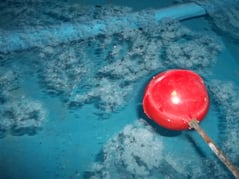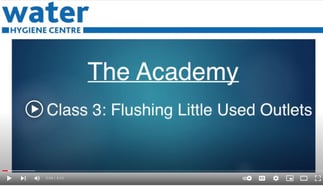If you are a Duty Holder or the formally appointed Responsible Person (Water), e.g. Head Teacher, Business Manager Maintenance Manager or similar, you have a legal responsibility to ensure that the occupants within your premises are suitably protected from water safety risks including Legionella bacteria.
When dealing with water safety issues in schools, frequent reviews and updates to your Legionella risk assessment are key to keeping water systems safe for use.
Legionella Risk in Schools, Colleges, and Universities
Whether assessing the risk from Legionella bacteria or devising control measures for your education establishment, it’s of vital importance you have a clear understanding of both inherent and operational aspects of the water system's management.
The design and installation of your water system may well have incorporated best practice approaches ensuring inherent risks are relatively low, however at an operational level, a majority of areas within any school may not be used during holiday periods.
To mitigate these risks, your planned preventative maintenance and monitoring schedule needs to include all foreseeable circumstances – particularly as infrequently used water outlets are those often most at risk from the development of Legionella contamination.
Good water management can reasonably focus on, but not be limited by, two main considerations:
- Ensuring that there is sufficient water turnover to prevent stagnation;
- Ensuring that cold water remains cold and hot water remains hot. The guidance indicates stored and cold water at the outlet must always be less than 20°C and hot water must be stored above 60°C nor less than 50°C at the outlet.
Stagnant Water
 Whilst there are many other considerations for mitigating the growth of waterborne bacteria, such as Legionella, the presence of slow-moving or stagnant water at temperatures between 20-45°C can provide ideal growth conditions for such bacteria and must therefore be avoided.
Whilst there are many other considerations for mitigating the growth of waterborne bacteria, such as Legionella, the presence of slow-moving or stagnant water at temperatures between 20-45°C can provide ideal growth conditions for such bacteria and must therefore be avoided.
At this point, it’s noteworthy to identify that waterborne bacteria such as Legionella are ‘ubiquitous’ within water systems although are often flushed to drain in well-managed and maintained properties.
Learn all about Legionella risk in RAAC-affected buildings.
Biofilm
When water systems provide the ideal conditions for bacterial growth this often presents an issue that requires an expensive, multi-factorial and time-intensive response and which may have only limited success. It is often very difficult if not impossible to eradicate biofilm from affected systems with lasting success.
HSG274
As previously mentioned, systems affected by waterborne bacteria often succumb to recurring issues and therefore prevention in this regard is very much better than cure. As such, when deciding upon a suitable risk mitigation strategy for buildings subject to ‘scheduled’ intermittent or low use, such as schools, universities etc, it may be prudent to review HSG274 Part 2, Paragraph 2.50; which offers practical guidance on how to manage buildings that have been temporarily taken out of use (known as mothballing).
Whilst school and university estates increasingly have ‘dual use’ facilities that help to maintain the turnover of water by keeping buildings open to service users during holiday periods, this is not always the case, as such staff must be tasked with safely managing water during this time via a suitable flushing regime.
Legionella Flushing Regime
 A suitable Legionella risk assessment will assist in determining the required control measures. It’s advised that any mothballing strategy or procedure should be a compromise between the prevention of stagnation by having a regular Legionella flushing regime, the avoidance of water wastage and the protection of the water system from degradation caused by any disinfectant added.
A suitable Legionella risk assessment will assist in determining the required control measures. It’s advised that any mothballing strategy or procedure should be a compromise between the prevention of stagnation by having a regular Legionella flushing regime, the avoidance of water wastage and the protection of the water system from degradation caused by any disinfectant added.
During shorter periods of infrequent or intermittent use, microbial growth may be adequately controlled by identifying areas of infrequent use, i.e. those used less than once per week, and flushing them at least weekly (more frequently than weekly is expected in higher-risk premises). Each outlet should be flushed for long enough to ensure that the entire contents of the outlet and its associated supply pipework have been replenished with fresh water.
For longer periods of disuse, it can be acceptable to leave a system filled with water without weekly flushing – if measures are in place to prevent unauthorised use, although this will increase the opportunity for biofilm establishment.
Draining down a system unnecessarily may leave residual moisture or pockets of water within the system, potentially created or exacerbated by high humidity, and this may subsequently provide the potential for worsening conditions. Leaving the system filled with water and suitably maintained also helps to avoid issues associated with systems drying out, such as joint failure in sectional tanks and/or metal pipework corrosion. That said, these systems should be thoroughly flushed, cleaned and disinfected before their return to use. In such situations, it’s indicated to recommission these systems as though they were new following British Standards; BS EN 806, BS 8558 and BS PD 855468.
Learn more about our Legionella Awareness training, ideal for caretakers & janitors
Feel free to reach out if you have any questions about the issues mentioned above or if you would like to consult with one of our experts on water hygiene.
Editors Note: The information provided in this blog is correct at the date of original publication – February 2023 (Revised April 2024).
Image by Wokandapix from Pixabay, and Shutterstock
© Water Hygiene Centre 2024









